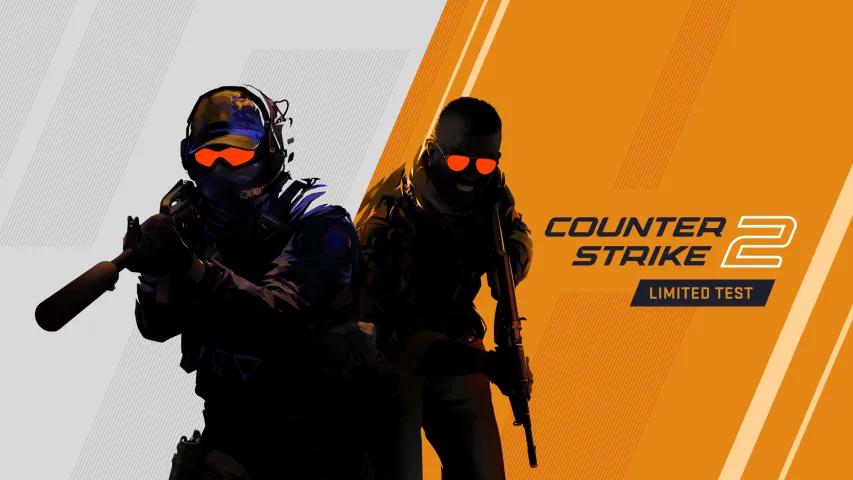Article
13:55, 16.06.2024

Counter-Strike 2 has brought numerous changes and enhancements compared to its predecessor. Among the most significant updates is the overhaul of the ranking system. Valve has listened to community feedback and introduced a new, more dynamic system for evaluating player skills. In CS2, the traditional Global Elite cap has been removed, allowing players to continuously climb the ranks.
This new system, known as the CS Rating, replaces the old ranking method. Traditional matchmaking has been supplanted by Premier mode, which emphasizes team performance and strategic play. Let's explore how the CS2 ranking system works, the specifics of the Premier mode, and the key differences it brings compared to the old system.
Overview of Ranks in CS2
CS2's ranking system has been revamped to provide a more accurate and evolving assessment of player abilities. The previous rank structure from CS:GO has been replaced with a new system that allows for infinite progression. This ensures a more competitive environment where players are consistently motivated to improve.
The new CS Rating system evaluates players based on their match performance, offering a rating that starts at 0 and can increase indefinitely. This eliminates the previous cap of Global Elite, enabling players to continually strive for higher ratings.

Changes in CS2 Ranking System
- Introduction of CS Rating:
- The CS Rating system has replaced the old ranking method, providing a limitless rating scale.
- Players begin with a rating of 0, which can increase indefinitely based on their performance in matches.
- During the beta season, the highest rating recorded exceeded 40,000.
- Emphasis on Premier Mode:
- Premier mode is now the main competitive mode in CS2, taking precedence over traditional matchmaking.
- In Premier mode, teams ban maps in a strategic selection process before each match.
- Focus on Team Performance:
- The new ranking system prioritizes team performance over individual statistics such as kills and assists.
- Winning matches is crucial for increasing a player's rating and promoting teamwork and strategic play.
- Rating Tiers and Colors:
- Ratings are divided into tiers, each marked by a distinct colour, to indicate a player's rank or category.


Core Differences
1. Game Sense and Map Knowledge
- Silvers:
- Basic understanding of maps and limited strategic awareness.
- Often lack knowledge of advanced spots and common positions, leading to predictable play.
- Globals:
- Extensive map knowledge, including advanced angles, boosts, and hiding spots.
- Mastery of strategies, rotations, and map control, allowing for adaptive and unpredictable gameplay.
2. Aim and Mechanical Skills
- Silvers:
- Inconsistent aim and lack of precision.
- Basic understanding of recoil control and spray patterns, often resulting in missed shots.
- Globals:
- Highly accurate aim with consistent headshots.
- Advanced recoil control and mastery of spray patterns, enabling precise and effective shooting.

3. Communication and Teamplay
- Silvers:
- Limited communication, often restricted to basic callouts.
- Lack of coordination and teamwork, leading to fragmented gameplay.
- Globals:
- Constant and effective communication, with detailed callouts and strategies.
- High level of teamwork and coordination, using utility and positioning to support each other.
4. Game Strategy and Tactics
- Silvers:
- Basic understanding of game strategy with predictable plays.
- Often rely on simple tactics and struggle to adapt to changing situations.
- Globals:
- Deep understanding of game strategy and ability to adapt mid-game.
- Use of advanced tactics, fakes, and coordinated executions to outplay opponents.
5. Economic Management
- Silvers:
- Poor economic management leads to inconsistent buys and force-buy errors.
- Lack of understanding of when to save or force-buy, resulting in suboptimal rounds.
- Globals:
- Excellent economic management, ensuring optimal buys and saves.
- Strategic decision-making regarding when to save, force-buy, or eco, maintaining a balanced economy.


6. Utility Usage
- Silvers:
- Limited knowledge and usage of utility (grenades, smokes, flashes).
- Often waste utility or use it ineffectively.
- Globals:
- Expert use of utility, including advanced smoke and flashbang setups.
- Strategic use of utility to control maps, execute strategies, and disrupt opponents.
7. Positioning and Movement
- Silvers:
- Basic positioning and movement, often caught out of position.
- Limited awareness of advantageous positions and how to use them.
- Globals:
- Superior positioning and movement, always maximizing cover and angles.
- High awareness of positioning for both offence and defence, enabling them to take advantageous fights.

Conclusion
The differences between Silver and Global players in CS2 are profound, encompassing various aspects of gameplay, strategy, and team coordination. Understanding these core differences is crucial for players looking to improve and climb the ranks.
Silvers often struggle with basic mechanics, map knowledge, and strategic play, while Globals demonstrate advanced skills, deep game sense, and effective teamwork. For Silver players aiming to ascend the ranks, focusing on improving aim, learning advanced map strategies, enhancing communication, and mastering economic management are essential steps.
The introduction of the new CS2 ranking system, with its emphasis on team performance and continuous progression, offers a fresh opportunity for players to strive for excellence. By studying and emulating the practices of higher-ranked players, anyone can enhance their gameplay and achieve new heights in CS2. Continuous practice, learning, and dedication are key to advancing from Silver to Global and beyond.







No comments yet! Be the first one to react